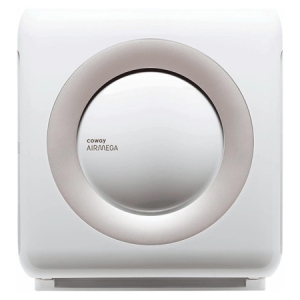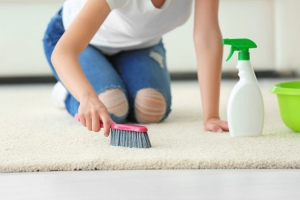Fed Up with the Fed? Here’s My Advice.
For the seventh time this year, the Federal Reserve raised interest rates, this time by half a percentage point on Dec. 14, to a range of 4.25 to 4.5%. The primary reason for the rate hikes is to combat inflation, but what does it mean for home buyers?
One thing history tells us is that if you’re looking to purchase a home, any attempt to time the market may not work out in your favor. As inflation continues to increase and rates steadily trend up, higher interest rates and mortgage payments may be the result. You may have better luck locking in a lower mortgage interest rate now rather than gambling on an uncertain future.
Timing Is Always a Gamble
Timing the market isn’t always the best way to figure out when to buy a home. People who wait for the right time, hoping to squeeze a few percentage points off their mortgage rate, often find themselves waiting too long and wind up with higher monthly mortgage payments than expected. And those continuing to wait for some sort of market correction may find themselves on the sidelines as rates climb steadily higher. That’s not conjecture, it’s history.
Keep in mind that you’re not just timing the US market, you’re factoring in the global market. Inflation is a result of many factors including the war in Ukraine and the ongoing pandemic issues. The UK is at a 40-year high at 10% and Germany is in the same range. Think our 7% is bad enough? Inflation in Turkey and Argentina is up over 80%.
Think Micro, Not Macro
Rather than timing the global market, try working within your own schedule and plan. Think micro! Look at your personal economic situation first and foremost. Consider working with a financial planner to see if it makes sense to buy your home now rather than waiting on rumors and predictions for next year. Remember: you buy the house and date the rate. You can always refinance down the road.
If you are ready now, this may be the best time to purchase for a while. Let’s talk about your options before the Fed gets too aggressive and potentially creates a new financial challenge in an effort to solve another.
* * * * *
If you’d like to chat about mortgage options, please call me at 617-965-1236. If you’re planning to buy this year, let’s talk soon. I look forward to speaking with you.
Ready to buy a new home or refinance the one you own? Please get in touch and I’ll be happy to answer your questions and help guide you through the process. I look forward to speaking with you.
The Holidays Are Here
Happy Hanukkah, Christmas, Kwanzaa, and New Year!
Even if you don’t celebrate Christmas you’re probably familiar with the song “The 12 Days of Christmas.” It’s the one three french hens, two turtle doves, and a partridge in a pear tree. Weird gifts to be sure.
Each day brings the previous gifts, so by the end of the song, the gifter’s “true love” receives about 184 total birds between the partridges, doves, hens, calling birds (aka colly birds), swans and geese. Others argue the total is 224 birds because the “five gold rings” are not jewelry but refer to a ring-necked pheasant. That’s a lot of birds, not to mention the dozen pear trees!
What’s the Time Limit for Displaying Holiday Decorations?
 Have you ever driven down a street on a warm spring day and noticed plastic reindeer and Christmas lights on someone’s roof? It’s a pet peeve for many. Holiday decorations have a specific time and place. So what is the etiquette?
Have you ever driven down a street on a warm spring day and noticed plastic reindeer and Christmas lights on someone’s roof? It’s a pet peeve for many. Holiday decorations have a specific time and place. So what is the etiquette?
We consulted several etiquette sources like Emily Post and online sites like Fatherly.com and Better Homes & Gardens. The consensus, while not 100% in agreement, leaned strongly towards removing your menorah the day after Hanukkah ends and your Christmas tree and decorations 12 days after Christmas.
But there were other opinions. Some felt that you should keep them up longer if family is visiting for a few extra days. No one said anything about rooftop reindeer in spring, so don’t do that.
Some suggested that businesses should keep the menorah as long as the Christmas decorations to show others the importance of both holidays. In the interest of diversity and inclusion, it is recommended in office settings to include a Kwanzaa kinara (candle holder) and then removing all decorations after the last holiday ends (or after New Year’s Day).

 Floral wallpaper, pastel sofas, lucite chairs and more are back in style as 1980s home decor trends have returned. Call it Miami Vice Revisited or Golden Girls Chic, these ’80s decor trends are making a big comeback to homes across the US.
Floral wallpaper, pastel sofas, lucite chairs and more are back in style as 1980s home decor trends have returned. Call it Miami Vice Revisited or Golden Girls Chic, these ’80s decor trends are making a big comeback to homes across the US. These room refreshers have come a long way in recent years and they are reasonably priced for what they do. When used properly they can reduce household odors as well as common allergens that make you sick.
These room refreshers have come a long way in recent years and they are reasonably priced for what they do. When used properly they can reduce household odors as well as common allergens that make you sick. What’s the best way to clean your carpets? Everyone has an opinion: steam, shampoo, cold water, hot water, etc. But other variables exist as well: call in a professional, rent a machine, hands-and-knees scrub, and more. The fact is, any of these methods will leave your carpets cleaner, but what are the risks involved?
What’s the best way to clean your carpets? Everyone has an opinion: steam, shampoo, cold water, hot water, etc. But other variables exist as well: call in a professional, rent a machine, hands-and-knees scrub, and more. The fact is, any of these methods will leave your carpets cleaner, but what are the risks involved?
 Freshen Up Your Gym Bag. A good workout can lead to unwanted odors that get trapped inside your gym bag, only to burst forth the next time you open it. Even the cleanest bag can get a little funky, so drop a few dryer sheets in it to neutralize odors. Pro tip: stick them in your sneakers to minimize foot odor.
Freshen Up Your Gym Bag. A good workout can lead to unwanted odors that get trapped inside your gym bag, only to burst forth the next time you open it. Even the cleanest bag can get a little funky, so drop a few dryer sheets in it to neutralize odors. Pro tip: stick them in your sneakers to minimize foot odor. It’s been an odd February with temperatures close to zero some days, 65 this week, and another snowstorm heading to us tomorrow. This made us think about curtains and their function. Why? Read on.
It’s been an odd February with temperatures close to zero some days, 65 this week, and another snowstorm heading to us tomorrow. This made us think about curtains and their function. Why? Read on. The fact is, adult moths don’t eat clothing. I know, we’re shocked! How can this myth have survived for generations and, more to the point, what exactly is eating holes in your beautiful cashmere (or wool) sweaters?
The fact is, adult moths don’t eat clothing. I know, we’re shocked! How can this myth have survived for generations and, more to the point, what exactly is eating holes in your beautiful cashmere (or wool) sweaters? With 70% of the state of Massachusetts having had at least one COVID-19 vaccination, we are one of the highest vaccinated states in the country. That’s good news for gatherings. But if like most families hosting events, you’re probably not going to ask for proof of vaccinations as you welcome them into your home. So be safe, but have fun.
With 70% of the state of Massachusetts having had at least one COVID-19 vaccination, we are one of the highest vaccinated states in the country. That’s good news for gatherings. But if like most families hosting events, you’re probably not going to ask for proof of vaccinations as you welcome them into your home. So be safe, but have fun.